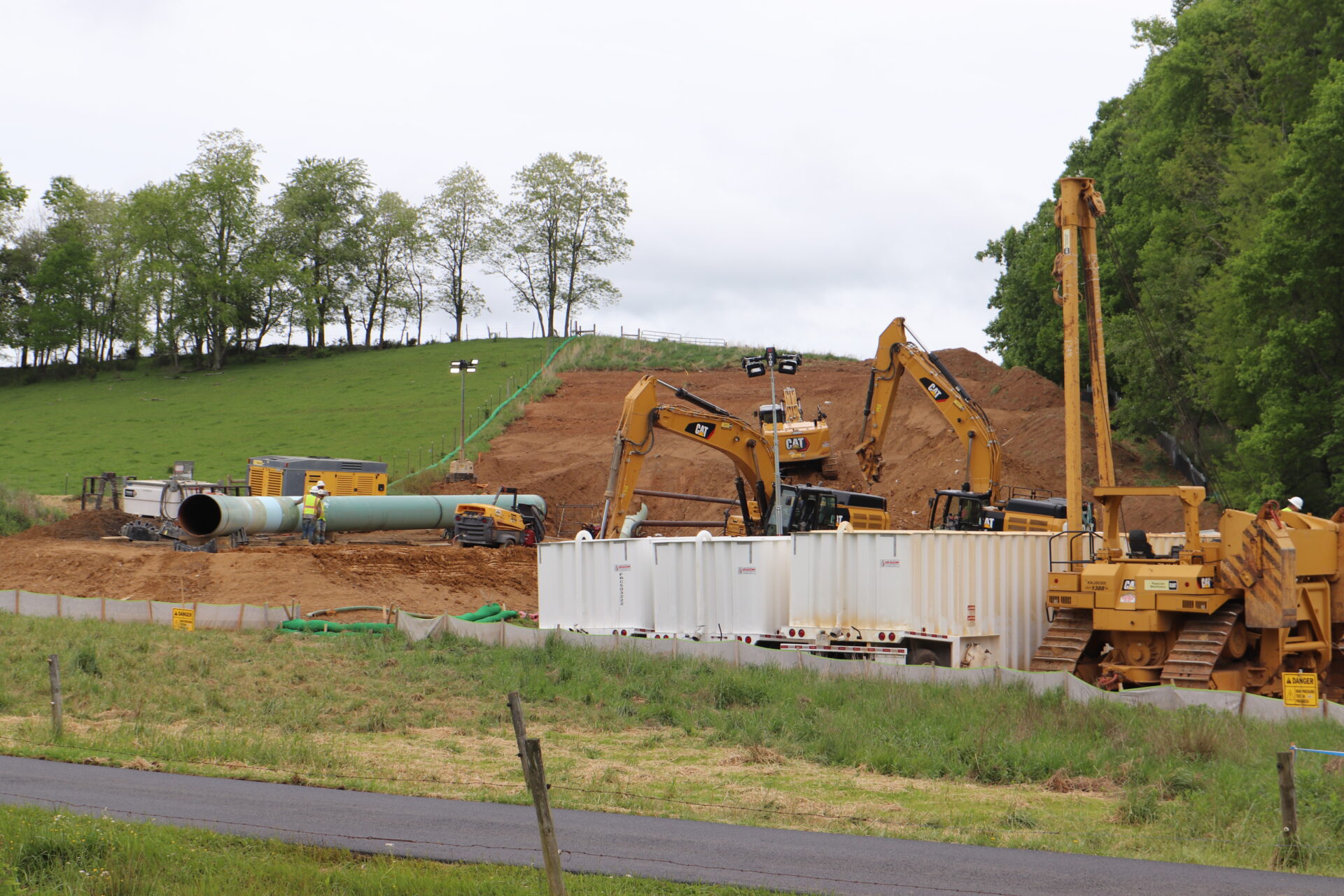After a decade of planning and construction, the Mountain Valley Pipeline is now moving natural gas.
It stretches 303 miles from north central West Virginia to southern Virginia. And as of Friday, the Mountain Valley Pipeline is in operation.
The nearly $8 billion pipeline began construction in 2018. It encountered some of the most rugged and remote terrain in Appalachia, and opposition.
Opponents succeeded in blocking the project in federal court until last summer when West Virginia Sen. Joe Manchin made its completion assured as part of a spending deal.
“This pipeline is essential in ensuring the nation’s energy and national security and providing affordable, reliable natural gas to hundreds of thousands of Americans,” Manchin said in a statement Friday.
In its announcement Friday, pipeline builder Equitrans Midstream thanked Manchin, as well as Sen. Shelley Moore Capito and Rep. Carol Miller.
“We are grateful for the ongoing professionalism and tremendous efforts of the federal and state agencies that worked tirelessly for many years to ensure MVP’s construction activities met or exceeded all applicable permitting requirements,” said Thomas Karam, executive chairman of Equitrans Midstream. “In addition, we would not be commencing commercial operations were it not for the relentless advocacy and commitment of our federal and state elected officials.”
The pipe burst during water pressure testing in Bent Mountain, Virginia, last month, raising concerns among residents about its integrity.
Nevertheless, the Federal Energy Regulatory Commission approved the pipeline for service earlier this week. Residents, community groups and state and local officials had urged FERC to deny the pipeline’s request to enter service.
Capito has been one of the pipeline’s biggest supporters. She endorsed Manchin’s effort to approve all of its permits in the Fiscal Responsibility Act last year. Manchin chairs the Energy and Natural Resources Committee, while Capito is the senior Republican on the Environment and Public Works Committee, giving them a prominent voice on energy infrastructure.
“This critical project is in now in service and can begin to deliver needed energy to markets up and down the Atlantic coast,” she said in a statement Friday. “This entire process took a lot of perseverance, and I’m glad we fought every step of the way to help the Mountain Valley Pipeline come to fruition, which will benefit workers and consumers for years to come.”
At full capacity, the pipeline can move 2 billion cubic feet of gas a day under high pressure.
“Natural gas is an essential fuel for modern life, and, as a critical infrastructure project, the Mountain Valley Pipeline will play an integral role in achieving a lower-carbon future while helping to ensure America’s energy and economic security for decades to come,” said Diana Charletta, president and CEO of Equitrans Midstream.
